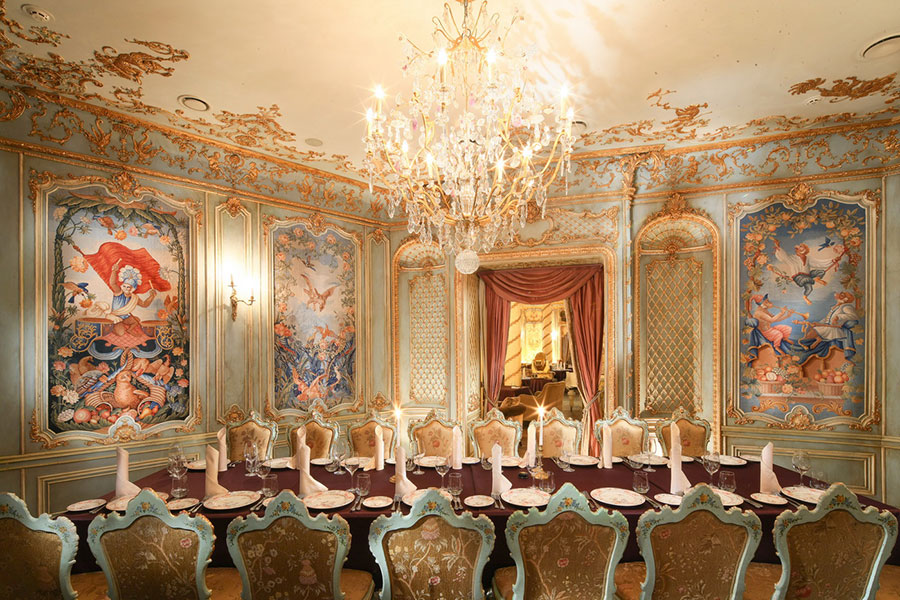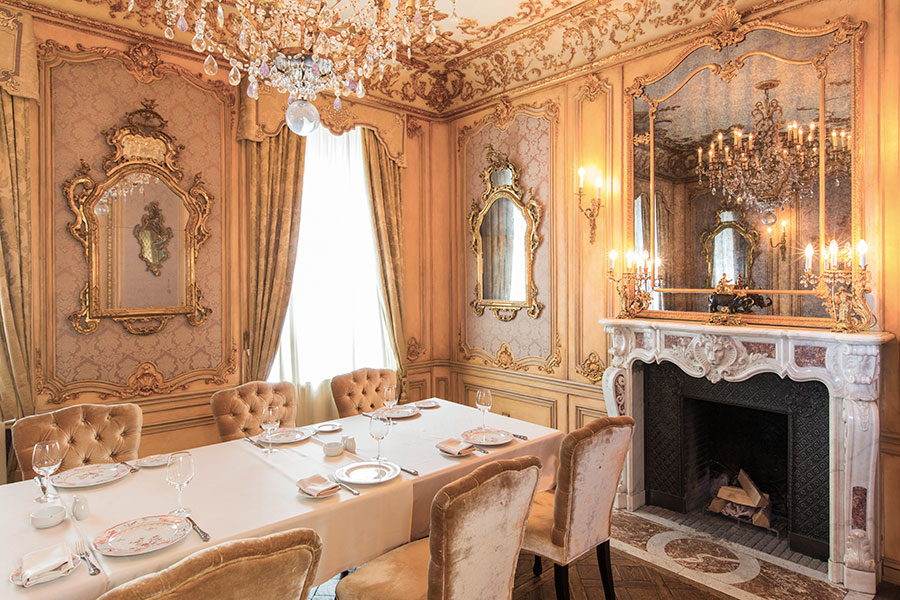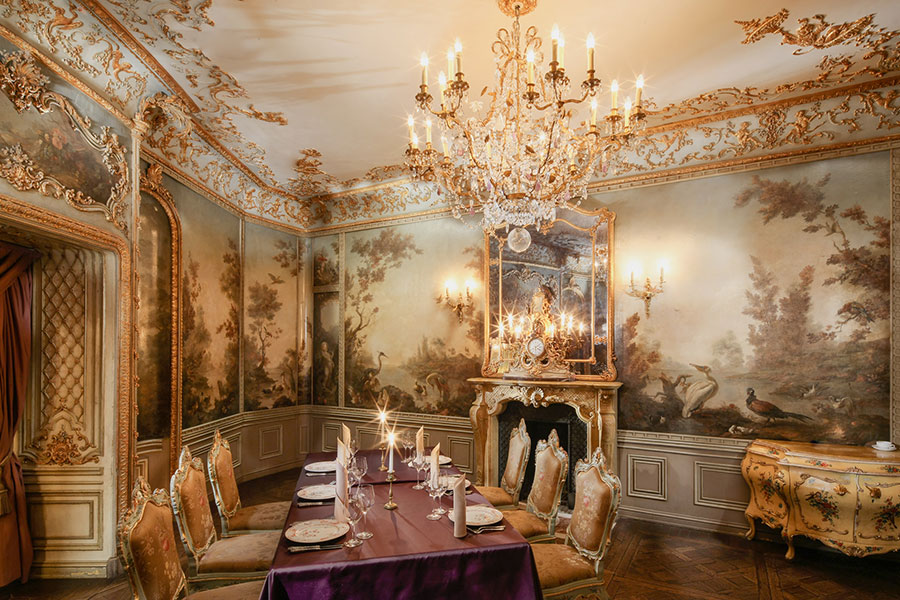Private cabinets
“Chinese Silk” Room
The wall panels of the hall are covered with painted silk representing the motifs of Chinese landscape painting. In the XVIII century, the silk wallpapers were one of the musts of the palace interior. They could be woven or painted by hand. The charm and the high cost of the imported Chinese fabrics pushed the Europeans to create imitations. The authentic Chinese artifacts and items made to imitate the Oriental Art enhanced a European-style interior by creating a strange yet harmonious unity.
“Gobelins” Room
Seeing the antique gobelins in original glorious technicolor is equal to travelling through time. The woven carpets decorating the room were made by French craftsmen after the surviving Louis XIV and Louis XV sketches. They create a uniform ensemble representing the kingdom of animals and birds.
“Alcove” Room
The hall in the Louis XIV style is decorated with scenic perspectives of a beautiful garden and surrounding countryside built into the wall panels. The spectator seems to be inside a light garden pavilion at the top of the hill. The trompe l’oeil effect introduced to mislead the feelings, and then to stun and delight the viewer was admired by contemporaries. The landscape trompe l’oeil required special skills of the artist when reproducing objects as if they were washed with the air and the sun. The niches made in the form of garden treillages in this hall, as well as in the other ones, emphasize the link between baroque interior and the nature.
“Mirrors” Room
The antique mirrors played the leading role in the hall interior. The manufacture of glass mirrors was a very time-consuming process, and only very wealthy people could afford to have them. The mirrors ability to reflect the light and visually expand the room was perceived in two ways – as a physical characteristic very appreciated by the decorators, and as a mystical reality duplication. The secret of making the best mirrors belonged to the Venetian craftsmen from the island of Murano. They were obliged to keep it under pain of death, but the agents of Louis XIV managed to bring a few glass blowers and their families to France. The Great King, who encouraged the national industry of luxury in every way, ordered to face the largest and the most impressive hall of the Versailles Palace with the mirrors. It was then named the Hall of Mirrors. The Turandot restaurant hall is decorated with authentic Venetian (one is German) mirrors of the XVIII century. The mirror glass becomes even more fragile over time, blurs, grows black spots from inside, so the value of well-preserved specimens is very high. The fireplace is decorated with a vintage English bronze girandole.
“Gilded Cage” Room
On the hall walls, there are ornamental panels with the images of fine cages hanging on the trees and birds flying about. The paintings finely combine the grisaille illusion technique to imitate the landscape using different shades of the same color with the composition principles typical for the Far Eastern screens. The images are in bold relief standing out against the deep gold background and create the impression of a fragile, illusive beauty.
“Birds” Room
The walls are painted with the images of birds in their natural habitat. A tender poetic sentiment of the painting together with high-fidelity were typical for the Modern Age period when admiring the nature and dreaming about natural “Golden Age” got along well with the natural sciences development. The animal painters were in the royal good graces. Often, creating portraits of the animals kept in the royal menagerie was part of their duties. In 1736, Carl Linnaeus, Swedish naturalist, published his book “Systema Naturae” marking the beginning of scientific classification of flora and fauna. Sometimes, the pictures can be found where the birds names are signed next to their images following the period principle to “educate by entertainment”.
“Fables” Room
The large boards and the sopraporta above the door show scenes from the fables, in which the human roles are played by talking animals. We have been familiar with these “migratory subjects” since childhood due to poetic narration by Ivan Krylov. He was inspired by Jean de La Fontaine, French Louis XIV fabulist, but Aesop, ancient Greek fabulist, was the pioneer of this genre, which combined entertainment with morality. By the king’s order, a labyrinth with fountains and statues of the heroes of Aesopian fables was arranged in Versailles Park.
“Garden of Eden” Room
The Flora kingdom is the main theme of this room decor. The floral motifs, so popular in baroque style, are presented everywhere, from the crystal chandeliers to the chairs upholstery. The wall false Chinese panels with flowers and birds are encased in carved framing in the form of lush vegetation. The cornice is decorated with a garden treillage. The guests feasting in this room seem to be in a luxurious garden created not by nature but a skilled hand of the artist.













